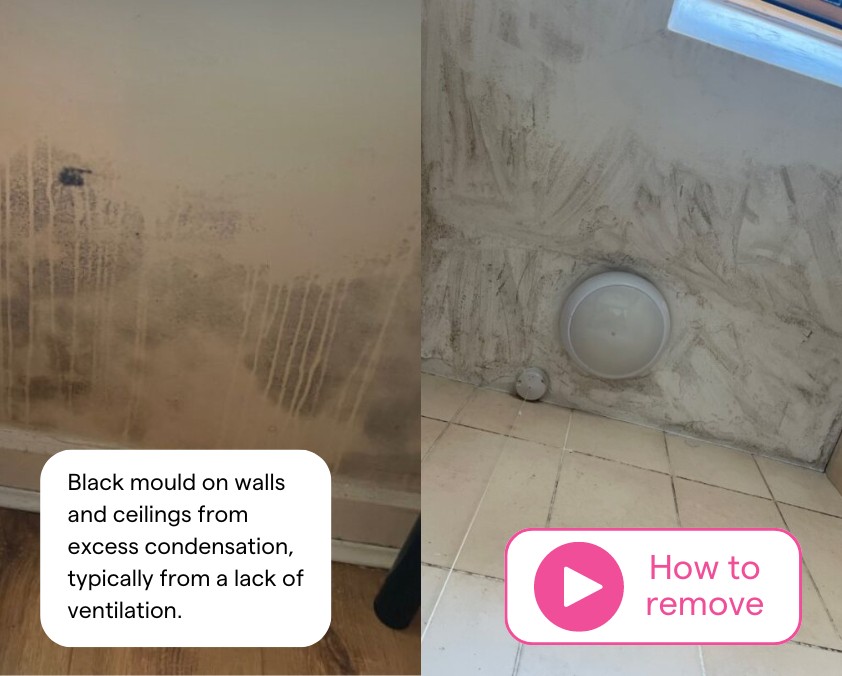
Avoiding charges for mould when you leave
To help minimise the possibility of charges at the end of your tenancy, we wanted to offer some advice on dealing with mould (a very common cause of deposit deductions).
During your tenancy, we've sent out guidance on how condensation turns to mould and presents itself on walls, ceilings, seals on baths, showers, sinks, grouting and kitchen tiles. Refresh yourself on our tips to make sure you're following best practice.
NOTE: Bear in mind that textured coatings, such as Artex, may contain low levels of asbestos – a potentially dangerous substance if disturbed. Such coatings are considered safe when not disturbed, and the cleaning of walls and ceilings would not generally be expected to be undertaken in a manner that damages or disturbs surfaces, so any risk of exposure to asbestos is extremely low. We recommend the use of spray-on mould killers, then gently wiping it off using a soft wet cloth.
Mouldy seals in the bathroom
If seals have already gone mouldy, it’s not too late to change their appearance from a yellow/grey/black to a bright white. Do this by bleaching them, as described in the video below. If you’ve never done it before, it’s quick, easy and we reckon you’ll be surprised at the results (we were!). It’s not just mould that will ruin the appearance of once bright-white seals: soap scum, limescale and other residues can do it too.
Mouldy grouting between bathroom and kitchen tiles
Pretty much the same applies to grouting too, though grouting takes longer to discolour. Grout cleaner is not expensive and can work wonders (though it’s something you shouldn’t need to do very often, if at all, if you follow the correct methods of prevention).
Mould on walls and ceilings
If black mould patches have grown on the walls or ceilings in your bathroom or other living spaces, tackle them before you move out. We've previously shared Cardiff Council's guidance on this, which says "in 99.99% of cases, the cure for condensation and mould growth is heating and ventilating a property. This is why tenants must take responsibility for the way they live in their home".
To treat mould on walls or ceilings:
- Grab some rubber gloves to protect your hands and open a window or turn on the extractor fan to ensure good airflow.
- Don't forget to pull furniture away from walls to check if any mould has formed behind it.
- Then, using a damp cloth with either diluted washing-up liquid or a mould remover, wipe away the mould.
- Throw away the cloth and vacuum the room to make sure you’ve removed all of the spores.
- Remember to continue ventilating your bathroom after showering to keep moisture at bay and to open the windows in other rooms from time to time too.
Mould on roller blinds
If your blinds have mould on them, you can spray them with a mould remover like Astonish, let it sit, then rinse them in warm water. You could alternatively soak them in a cold bleach bath, but be sure to rinse them thoroughly afterwards and let them drip dry completely.
If your blinds have been covered in mould for a long time, attempting to clean them yourself might not be very effective. In such cases, we recommend dealing with this yourself as it's easy enough to do and can save you a significant amount of money on contractor labour costs (typically around £80-100 per blind). This video will show you how to do it and we recommend purchasing the blinds from Blinds2Go.




